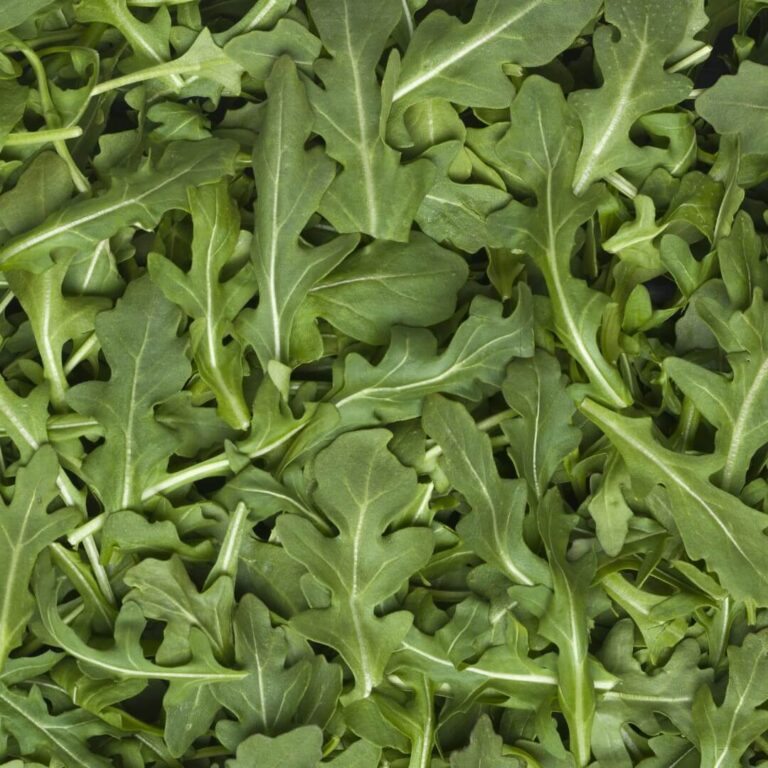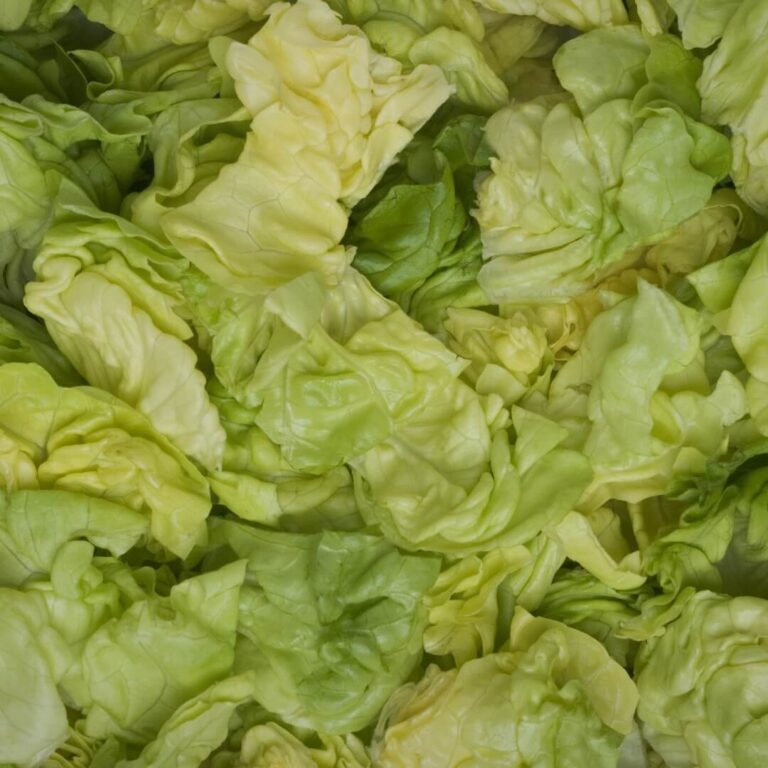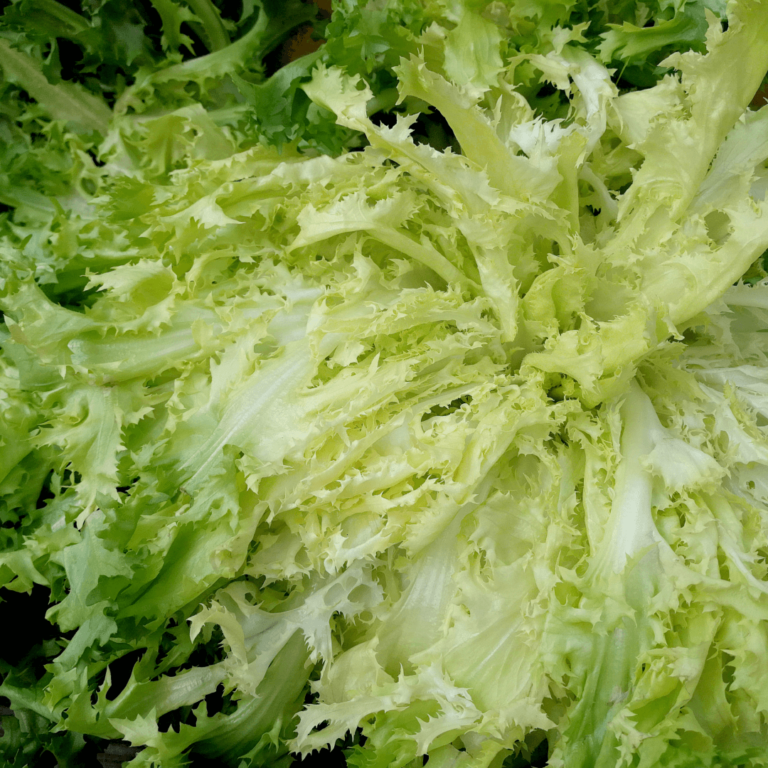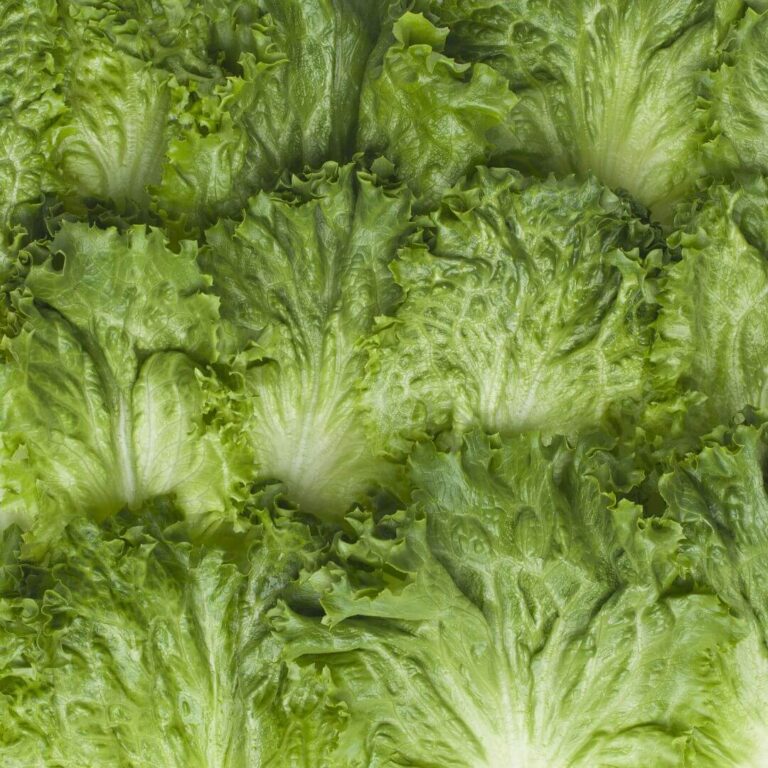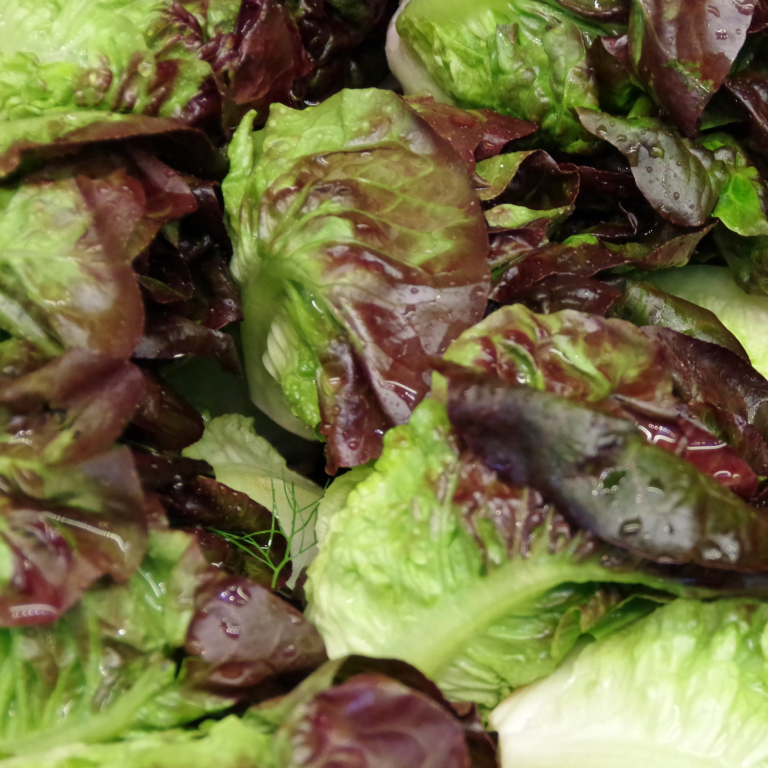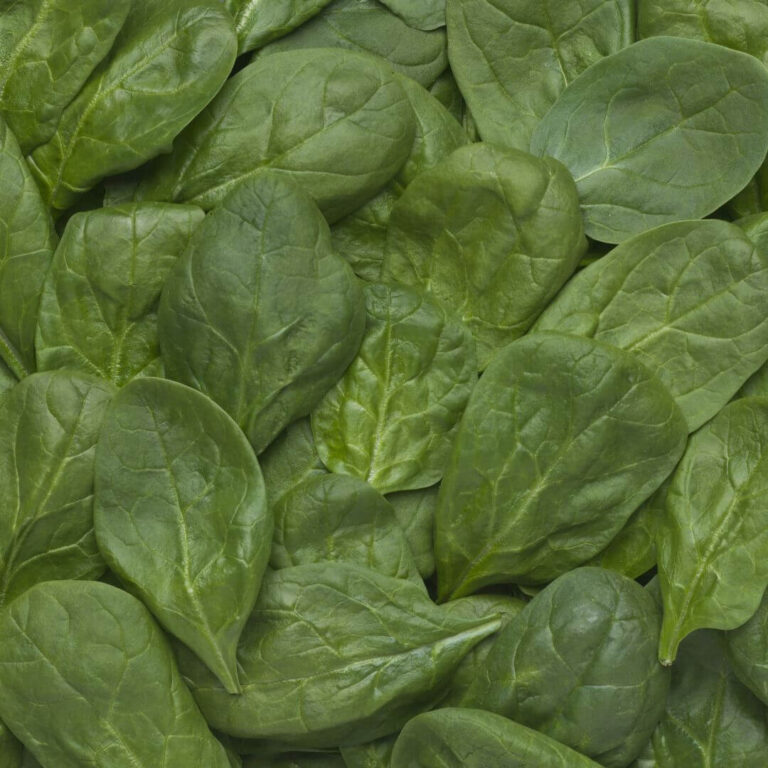All about Lettuces
Freezing lettuce isn’t recommended because it will drastically change the texture and flavor of the leaves. Lettuce contains a pretty high water content, and freezing causes ice crystals to form within the leaves, resulting in a wilted and mushy texture when it thaws out. For best results, enjoy lettuce fresh or keep it in the fridge.
Absolutely! Lettuce is not only low in calories but also packed with essential nutrients. It’s a good source of vitamins A, C, and K, which support immune function, skin health, and bone strength. Lettuce also has folate, iron, and dietary fiber, so it’s always a welcome addition to a balanced diet.
To keep lettuce fresh, start by choosing vibrant heads or leaves. After purchase, store lettuce in the refrigerator in a perforated plastic bag or a container lined with paper towels to absorb excess moisture. Avoid washing lettuce until you’re ready to use it — moisture speeds up spoilage. Regularly check stored lettuce for any signs of wilting or decay and make sure to remove any damaged leaves.
Proper storage is key to keeping your lettuce fresh for as long as possible. Store unwashed lettuce in the refrigerator’s crisper drawer, but be sure to not pack it too tightly so air can circulate around it. For cut lettuce, use an airtight container or a resealable bag with a paper towel to absorb moisture. Keep lettuce away from ethylene-producing fruits like apples and bananas, as they can accelerate spoilage if the ethylene comes in contact with the lettuce.
The shelf life of lettuce varies depending on the specific type and storage conditions. For the most part, whole heads of lettuce can last about 1-2 weeks when properly stored in the refrigerator. Pre-washed and cut lettuce leaves typically last for about 3-5 days. Always check for any signs of wilting, discoloration, or general sliminess before consuming, and always discard any lettuce that looks like it’s spoiled.
EXPLORE MORE VEGETABLE FACTS
Cruciferous Vegetables
With veggies like broccoli, cauliflower, and kale, cruciferous vegetables are among the most nutrient-dense.
Read MoreGarden Favorites
From bright tomatoes to crunchy carrots, find more details on the fresh vegetables that we all love.
Read More
